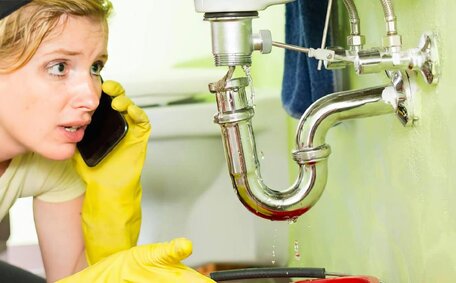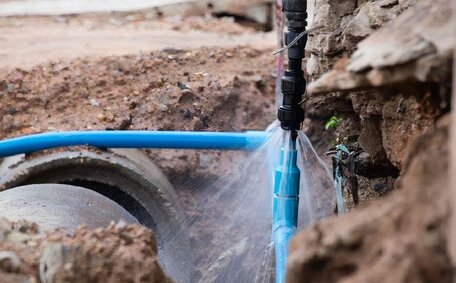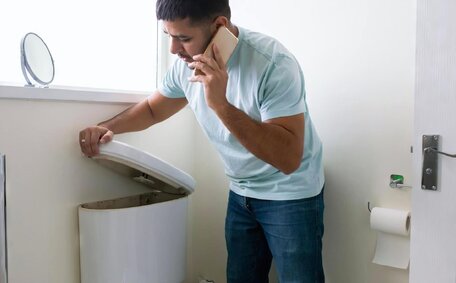Battle of The Natural Cleaners: Vinegar vs Baking Soda
The age-old debate around natural cleaning products often boils down to a battle between two pantry staples: vinegar and baking soda. These inexpensive ingredients have developed a cult-like following thanks to their versatile cleaning powers, eco-friendly reputations and chemical-free formulas. But which one reigns supreme when it comes to household cleaning?
Vinegar and baking soda each have stand-out qualities that make them handy helpers for different cleaning conundrums.
Vinegar is prized for its antimicrobial properties and effectiveness at eliminating odours. Vinegar is prized for its antimicrobial properties and effectiveness at eliminating odours. Vinegar is prized for its antimicrobial properties and effectiveness at eliminating odours.
When vinegar, an acid, interacts with baking soda, a base, an exciting chemical reaction occurs. When vinegar, an acid, interacts with baking soda, a base, an exciting chemical reaction occurs. At first, the reaction seems helpful, as the bubbling action can assist with loosening dirt and debris. But once the foaming subsides, the solution loses its cleaning power.
This gas causes bubbles and fizzing.
While the bubbles look impressive, combining vinegar and baking soda together actually wastes their individual strengths. While the bubbles look impressive, combining vinegar and baking soda together actually wastes their individual strengths.
Vinegar’s disinfecting prowess gets diluted in the process. Using each ingredient on its own maximises their cleaning potential.
Contrary to popular belief, mixing vinegar and baking soda doesn’t turbo-charge cleaning. But used separately at the right times, these natural cleaning wonders can make surfaces sparkle.
Why are vinegar and baking Soda great at cleaning?
Vinegar and baking soda are highly effective cleaners thanks to their unique chemical compositions.
As a mild acid, vinegar’s acetic acid content enables it to dissolve mineral deposits, grease, and grime. Vinegar kills bacteria, fungi and viruses on contact, helping sanitise surfaces. Its pungent aroma also works to deodorise smelly areas.
Baking soda functions as a gentle abrasive, helping to lift dirt, stains, and tarnish without scratching. When baking soda mixes with water, it forms an alkaline solution that can cut through grease and neutralise odours. As the solution dries, it pulls dirt away with it.
Using vinegar and baking soda individually magnifies their respective cleaning superpowers. Vinegar tackles germs, odours, soap scum, and more. Meanwhile, baking soda scrubs surfaces, deodorises, removes tarnish, and absorbs stains.
While mixing vinegar and baking soda together creates fun fizzing, it reduces their cleaning potential once the bubbles disappear. Saving these frugal ingredients for separate targeted applications ensures maximum results.
Bathroom Cleaning
When used wisely, baking soda and vinegar can transform the bathroom from grimy to gleaming.
Baking soda is a great abrasive cleaner for bathroom surfaces like sinks, tubs, tiles and more. For extra cleaning power, sprinkle baking soda directly on surfaces and let sit before scrubbing.
Make a paste with water and baking soda and use a sponge or brush to gently scrub away soap scum, mineral deposits and mildew from sinks, showers and tubs.
Vinegar can help kill germs and bacteria throughout the bathroom. Vinegar can help kill germs and bacteria throughout the bathroom.
Wipe down surfaces like sink fixtures, toilet bowls, counters and tile floors with undiluted vinegar. Use vinegar to remove hard water stains and soap scum buildup on shower doors as well.
To eliminate nasty odours from drains or garbage cans, pour baking soda down the drain followed by vinegar. Let the mixture bubble for 10-15 minutes then rinse with hot water. The fizzing reaction deodorises and cleans the pipes.
Using baking soda and vinegar separately maximises their cleaning potential in the bathroom. Baking soda scrubs away gunk, while vinegar disinfects and deodorises. With these two natural cleaners in your arsenal, you can achieve a pristine bathroom.
Kitchen Cleaning
The kitchen contains an array of surfaces and materials that all attract different types of dirt and grime. Baking soda and vinegar can be deployed separately to tackle kitchen cleaning challenges.
Baking soda works well to remove grease and burnt-on food from oven racks and grates. Make a paste with baking soda and water, apply to racks and grates, let sit for 15 minutes, then scrub and rinse. Baking soda can also absorb fridge odours when left in an open container inside.
Vinegar shines at disinfecting kitchen surfaces. This eliminates germs and bacteria where food prep occurs.
Use undiluted vinegar to wipe down countertops, sinks, appliances, tables and chairs. Vinegar also removes stubborn coffee and tea stains from mugs.
To clean drains, pour 1/2 cup baking soda down the kitchen sink drain followed by 1 cup heated vinegar. Let the fizzing reaction work for 15 minutes before rinsing with hot water. This treatment deodorises and declogs drains.
With baking soda’s abrasive cleaning power plus vinegar’s antimicrobial prowess, this dynamic duo makes an impactful kitchen cleaning team when used separately as needed.
Laundry
Vinegar and baking soda can give laundry loads a boost, tackling stains and odours when used separately.
Add 1/2 cup of baking soda along with detergent to wash cycles to help remove soils and lift stains from fabrics. The abrasive nature of baking soda jostles dirt particles loose. For extra stain-fighting power, make a paste of baking soda and water and pre-treat stained areas before washing.
Vinegar adds cleaning benefits to the rinse cycle. Vinegar’s acidity brightens fabrics and eliminates odours left behind by detergent. Vinegar also acts as a fabric softener.
Add 1/2 to 1 cup of white vinegar to a rinse cycle to remove soap residue and hard water minerals from laundry.
While mixing the two creates fun fizzing, using vinegar and baking soda separately provides maximum cleaning power for laundry. Baking soda lifts stains, while vinegar removes odours and brightens.
Stain Treatment
Vinegar and baking soda can be highly effective at tackling stubborn stains when used individually.
For oil-based stains like grease or tar, baking soda’s abrasive texture helps scrub the stain away. Make a paste by mixing 3 parts baking soda to 1 part water. Apply the paste to the stained area and let sit for 5 minutes before scrubbing and rinsing.
Vinegar can remove dye-based stains like berry juices or wine. Blot up excess liquid, then spray the stain with undiluted vinegar. Place an absorbent cloth on top to draw out the stain as the vinegar penetrates and breaks down the stain molecules.
For tough coffee or tea stains on mugs, fill the mug with 1 cup vinegar and let soak overnight. The acetic acid in the vinegar will dissolve the stain compounds so they can be washed away.
To remove sweat or deodorant marks from clothing, soak the area in equal parts vinegar and water for 30 minutes before washing. The vinegar solution helps break down the stubborn salts and oils.
Letting vinegar or baking soda individually sit and work on stained areas maximises their stain-fighting potential. Vinegar dissolves compounds while baking soda’s grit scrubs away grime for bright, revitalised results.
Subscribe to Tips and Special Offers
Want to keep your home sparkling clean using natural products like baking soda and vinegar? Subscribe to our email list for helpful tips and cleaning solutions delivered right to your inbox.
By signing up, you’ll also receive exclusive occasional offers on our plumbing services. Receive $50 off your next drain cleaning or water heater flush when you join our subscriber list.
Choose how you want to hear from us:
- Email: Get eco-friendly cleaning tips and special deals sent straight to your email
- Appointment: Schedule a hassle-free consultation online to discuss your plumbing needs
- Phone call: Speak directly with a representative to make an appointment or get answers to your questions
Unlock the power of baking soda, vinegar, and more with insider secrets to green cleaning. Sign up today to get the inside scoop on natural cleaning and plumbing specials.
The Chemical Reaction Between Baking Soda and Vinegar
When baking soda and vinegar are mixed together, a chemical reaction occurs that produces carbon dioxide gas. This gas is what creates the bubbles and fizzing you see when you combine these two common household ingredients.
Baking soda is a base, meaning it is alkaline with a pH higher than 7. When an acid and a base are combined, they neutralise one another and produce salt and water.
Vinegar is an acid, with a pH below 7. The specific reaction between baking soda (sodium bicarbonate) and vinegar (acetic acid) is:
Sodium bicarbonate + Acetic acid → Sodium acetate + Water + Carbon dioxide
During this reaction, sodium ions from the baking soda combine with acetate ions from the vinegar, forming sodium acetate. The release of carbon dioxide gas is what causes the fizzing bubbles when the two ingredients are mixed.
While mixing baking soda and vinegar is fun for science projects, it actually reduces their effectiveness for cleaning. Once the reaction stops, the solution is neutralised and the lift that the bubbles provide is gone. For best results, it’s better to harness the power of baking soda and vinegar separately.
When the Reaction Can Help With Cleaning
While mixing baking soda and vinegar together reduces their cleaning power, the fizzing reaction can provide some benefit for specific cleaning tasks.
The bubbles produced by the chemical reaction have a mechanical cleaning effect. As the carbon dioxide gas is released, the foaming and fizzing action help loosen dried-on messes and lift away dirt and debris. This can be useful when cleaning heavily soiled items.
Filling a vase or water bottle with a baking soda and vinegar solution can dislodge gunk and growth. The reactive bubbles scrub the insides clean. You can also place baking pans or cooking grates coated in baked-on spills in a bath of baking soda and vinegar to let the bubbles go to work.
Using a baking soda and vinegar mix to mechanically clean and lift dirt via the chemical reaction works best for stuck-on messes on hard surfaces. The solution itself has no actual cleaning power. But the bubbly reaction can be helpful as a pre-treatment for extra dirty items before washing.
Types of Cleaning Tasks It Can Tackle
p>p>p>p>p>p>p>






